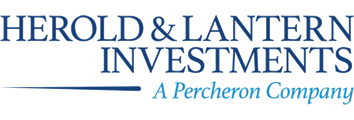4/21/2015 - Establishing a Sound Corporate Culture Can Alleviate Compliance Problems
By Wendy Lanton
Corporate culture is a top down approach. Management at member firms should take a close look at their corporate culture to ensure that what is being preached is actually being practiced.
Every organization has a corporate culture. It is what defines the personality of the organization. In general, a positive culture drives-short term and long-term success and aides in recruiting, employee retention and customer loyalty. A negative culture, on the other hand, is toxic as it breeds pessimism, dishonesty and unhappiness. It is imperative to understand a company’s culture in order to navigate the unique characteristics that exist within the entity.
Earlier this year, FINRA released its Exam Priorities Letter for 2015 in which it highlighted the importance of firm culture. In doing so, FINRA is providing practical guidance and recognizing that the organizational culture of a member firm plays a crucial role in shaping the behavior of its management and advisors. This guidance provides a much newer and fresher outlook. Regulators are now looking at consistent, observable patterns of behavior. While this may not seem measurable, due to its esoteric nature, it is a factor that will go into the findings of an exam.
So how do we analyze the main aspects of corporate culture and what it means to advisors, investors and regulators? The analysis of corporate culture is embedded in three main aspects: standards, values and attitude.
Standardscome from the firm’s top executives. These are the rules--often the unwritten rules--to live by within an organization. If senior management doesn’t adopt a culture of high ethical standards, the negative consequence of such choice will inevitably reverberate throughout the entire organization. Pursuant to FINRA Rule 2010, every firm is required to “observe high standards of commercial honor and just and equitable principles of trade.” While this ethos should always be followed, it appears that FINRA’s priority is embedded in the da-to-day organizational standards, not the principles of trade. Examples of low standards include allowing high-pressure sales tactics, apathy towards customer and advisor satisfaction, as well as overall lack of concern for the advisor and/or the investor. High standards are, of course, the polar opposite. A firm maintaining high standards cares deeply about their clients’ experiences, focuses less on profiteering and more on doing the right thing.
The values of a corporate culture are the motivational factors driving the energy of the firm. True value is what makes something “worth it”. Stated values can vastly differ from day to day reality. Any firm can say they have strong values. But those are just words. In the ever increasing regulatory environment we live in today, regulators are looking past the stated values often found on the firm’s website and are instead much more interested in the advisors’ values. The latter can be gauged by both interviewing staff members and reviewing the firm’s trade blotters. In a firm whose advisors are clearly motivated solely by high commissionable products and high client turnover it will be apparent to regulators that the firm’s cultural values do not align with industry standards.
The overall attitude, which is embedded in an organization, is the third element of its corporate culture. Regulators will examine firm’s personnel behavior, attitudes and underlying assumptions. The demeanor of the staff will speak volumes about their commitment to the corporate culture, which will ultimately affect how the firm views compliance. However, don’t mistake corporate culture with compliance. It is possible to have a compliant firm with a bad attitude just as much as you can have a non-compliant firm with a good attitude. The key is to know that regulators are looking at the overall feeling of a firm and using that information to paint a picture about the organization. They will use this knowledge when deciding how to target their exam and to ascertain whether or not the firm has “bad actors”.
A strong corporate culture is just one element that leads to putting the client first. This is likely why FINRA has chosen to focus on this aspect as part of its exam priorities this year. An entity with a questionable culture is likely to have poor risk controls and significant conflicts of interest. That, in turn, will generally lead to poor compliance.
Corporate culture is a top down approach. Management at member firms should take a close look at their corporate culture to ensure that what is being preached is actually being practiced. If a proper business environment does not exist a solid corporate culture cannot survive. Regulators are simply recognizing that many of the compliance problems they observe have roots in a firm’s culture. A firm’s policies should make it clear that unethical practices will not be tolerated.
Wendy Lanton is Chief Compliance Officer at Melville, NY-based Lantern Investments.
Click here to download the article.


